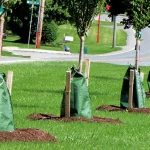When I first read The Secret Garden as a child, I was captivated by the idea of a hidden, magical place where anything could grow. I remember sneaking into my grandmother’s backyard, pretending it was my secret garden. I’d dig in the dirt, plant flowers, and imagine that I, like Mary Lennox, could bring life to something forgotten.
Frances Hodgson Burnett’s The Secret Garden is more than a children’s story. It’s a timeless tale about healing, hope, and the transformative power of nature. Whether you’re reading it for the first time or revisiting it as an adult, the story touches your heart and reminds you of the magic in the world.
In this article, we’ll explore The Secret Garden’s enduring appeal. We’ll hear from experts, explore its themes, and discover why this classic inspires readers of all ages.
What Makes The Secret Garden So Special?
At its core, The Secret Garden is a story about transformation. It follows Mary Lennox, a lonely and spoiled girl who discovers a hidden garden on her uncle’s estate. As she works to bring the garden back to life, she also begins to heal emotionally.
Frances Hodgson Burnett, the author of The Secret Garden, once said, “The Secret Garden is not just a children’s story; it’s a timeless allegory about healing, hope, and the transformative power of nature” (Source: Biography of Frances Hodgson Burnett)
The garden becomes a metaphor for growth and renewal, not just for the plants but also for the characters. Mary, her cousin Colin, and even her uncle Archibald experience profound changes as they reconnect with nature and each other.
Themes of Healing and Hope
One of the most potent themes in The Secret Garden is healing. Mary and Colin are both emotionally scarred at the beginning of the story. Mary is orphaned and neglected, while Colin is bedridden and convinced he’s too sick to live.
As they spend time in the garden, they begin to heal physically and emotionally. The fresh air, physical activity, and connection to nature work wonders for their well-being.
Neil Gaiman, a celebrated author, explains, “Burnett masterfully weaves themes of grief, loss, and the importance of human connection into the enchanting world of the Secret Garden” (Source: Neil Gaiman Interview)
This theme resonates deeply with readers because it reminds us that healing is possible, even in the darkest times.
The Magic of Nature
The garden itself is like a character in the story. Burnett’s vivid descriptions make it come alive, from the blooming roses to the chirping robins.
As one literary analysis notes, “Burnett’s vivid descriptions of the garden and its transformation bring the story to life, inviting readers to experience the magic for themselves” (Source: Literary Analysis of The Secret Garden)
The garden represents nature’s beauty and resilience. It shows us that even something neglected and forgotten can flourish with care and attention.
Mary’s Journey of Self-Discovery
Mary Lennox is one of literature’s most memorable characters. At the beginning of the story, she is selfish, stubborn, and unhappy. But as she tends to the garden, she begins to change.
Her journey is a powerful reminder of the importance of self-discovery. As one critic puts it, “Mary’s journey of self-discovery, both literally and metaphorically, is a poignant reminder of the importance of embracing life and finding joy in unexpected places” (Source: Literary Analysis of The Secret Garden)
Mary’s transformation inspires readers to look within themselves and find their hidden strengths.
Why The Secret Garden Endures
The Secret Garden continues to captivate readers more than a century after its publication. Its timeless themes of hope, healing, and human connection resonate across generations.
As one analysis notes, “The Secret Garden’s enduring popularity speaks to its timeless themes of hope, healing, and the power of human connection, which resonate with readers of all ages” (Source: Literary Analysis of The Secret Garden)
The story’s universal appeal lies in its ability to remind us of the magic in the world and the potential for growth and renewal in our lives.
Studies and Insights on The Secret Garden
For those who want to dive deeper into the story, here are some fascinating studies and insights:
- “The Psychology of Healing in Frances Hodgson Burnett’s The Secret Garden”: This academic article explores the psychological themes of grief, loss, and healing as depicted in the novel.
- “The Role of Nature in the Emotional and Physical Development of Children: Insights from The Secret Garden”: This study examines how the novel portrays the therapeutic benefits of nature for children.
- “The Secret Garden as a Coming-of-Age Story: A Comparative Analysis”: This study compares The Secret Garden to other classic coming-of-age stories, analyzing themes of self-discovery, independence, and personal growth.
- “The Secret Garden in Contemporary Children’s Literature: Influences and Adaptations”: This study explores how The Secret Garden has influenced contemporary children’s literature, examining its impact on themes, plot structures, and character development.
Personal Reflections
Reading The Secret Garden as an adult, I’m struck by how much deeper the story feels. It’s not just about a girl and a garden—it’s about the resilience of the human spirit and the power of hope.
I recently planted a small garden in my backyard, and as I watched the first flowers bloom, I thought of Mary and Colin. Their story reminds me that there’s always the potential for growth and renewal, even in difficult times.
Final Thoughts
The Secret Garden is more than just a book—it’s a source of inspiration and comfort. Its timeless themes and enchanting storytelling continue to touch readers’ hearts worldwide.
Whether you are discovering it for the first time or revisiting it as an adult, The Secret Garden invites you to believe in the magic of nature and the power of hope. As Frances Hodgson Burnett so beautifully shows us, even the most neglected places—and people—can bloom with a bit of love and care.









